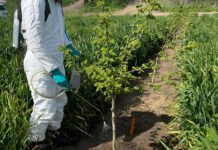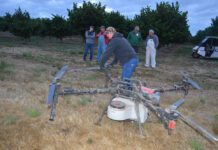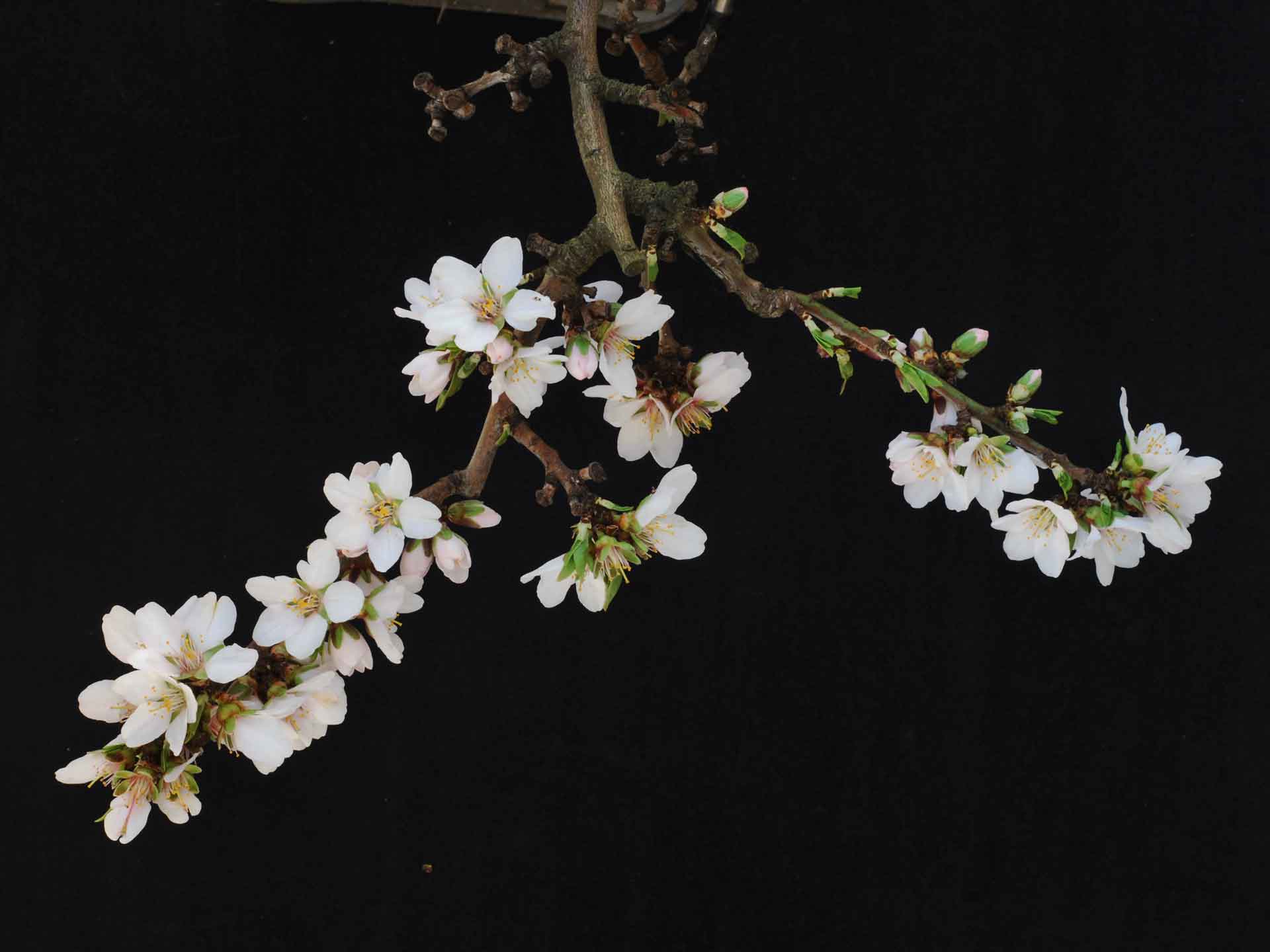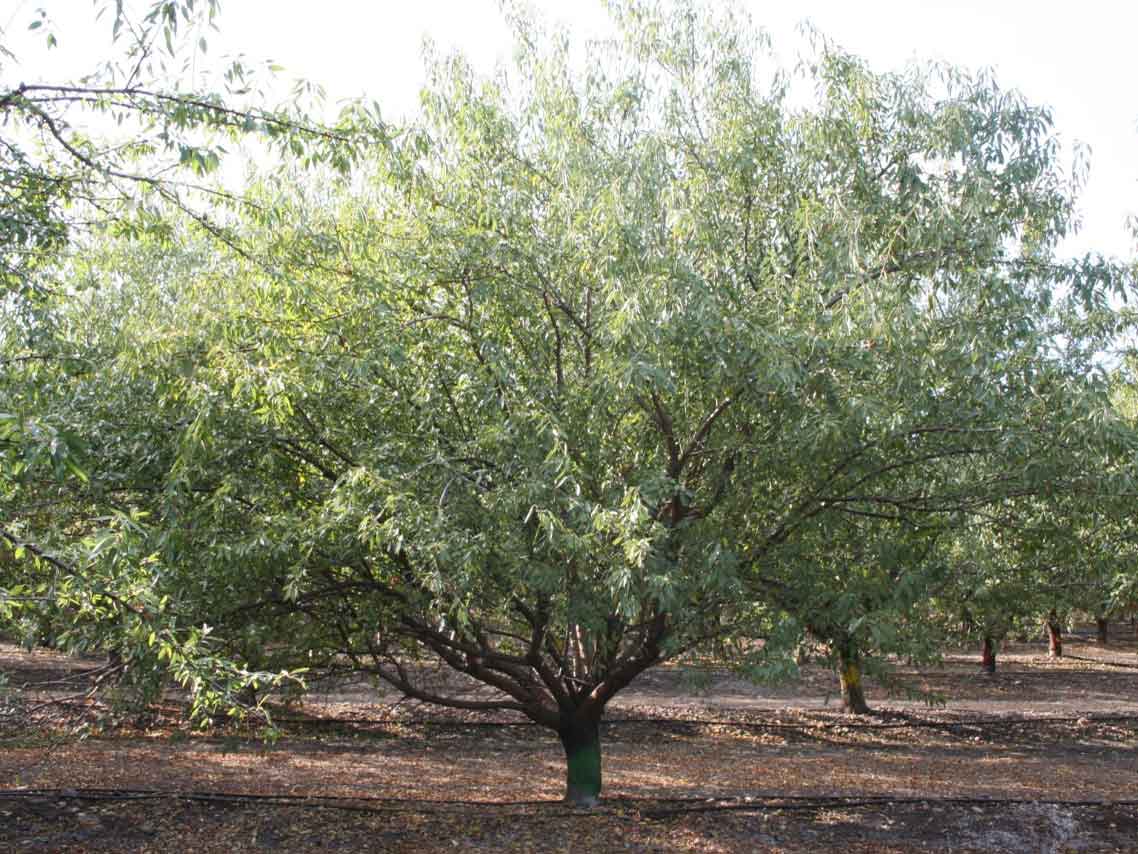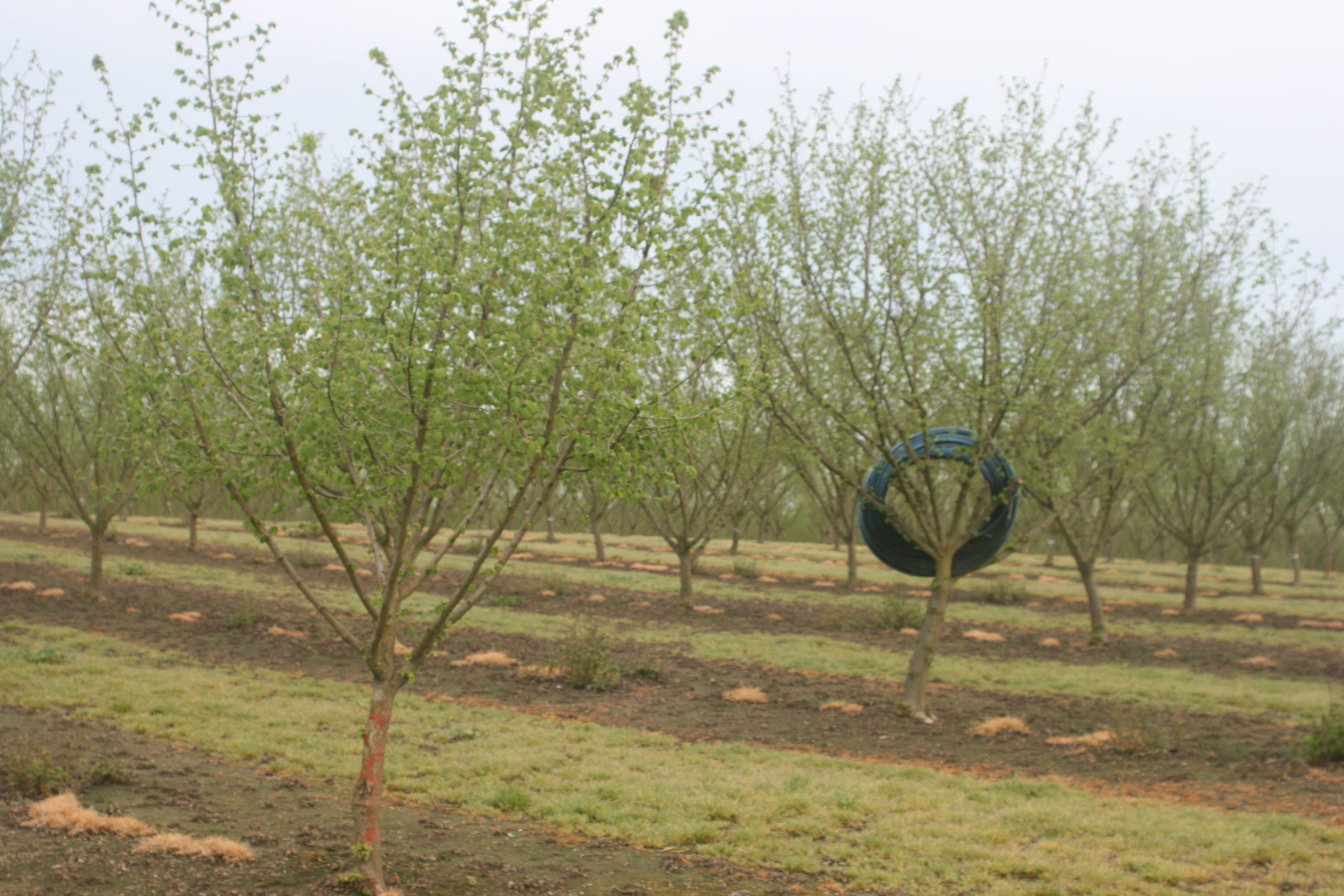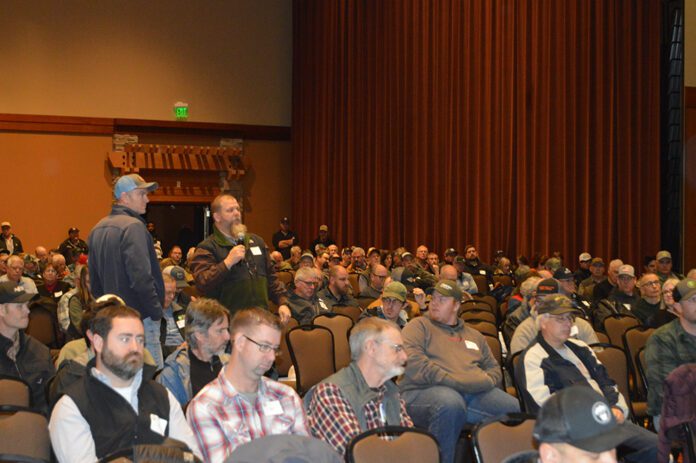
Oregon hazelnut producer Shaun George is walking the walk, and he’s shining a light on innovative production practices along the way.
George, who co-owns George Packing Company with his brother, Larry, has turned the company’s 1,000-acre hazelnut orchard into a sort of incubator farm, where he is adopting innovative practices to see how and if they work.
George and his brother added a hazelnut shell mulch to the soil and left the middle of rows untreated this past year to create ground cover during winter months. They released millions of green lacewings from a drone for aphid control, used mating disruption for filbert worm control and added raptor nests and bat boxes to the orchard to help with rodents and insects. And the farm did all this at or below the cost of conventional production.
“That was one of the goals was to stay within the budget of conventional production, and we pulled that off,” George said during a panel discussion at the 2025 Nut Growers Society Winter Meeting, held January 10 at the Spirit Mountain Casino in Grand Ronde, Ore.
The results? “We were pretty happy with what we saw,” he said.
George is employing these innovative production practices to show growers that addressing current market concerns with innovation doesn’t have to be a disadvantage.
“The reason we are looking at sustainable practices is we’re getting requests all the time from the market,” George said. “We all need to be thinking about alternatives to how we farm, and if we can do something to build up the soil or use less compounds, that’s going to be a really big point for us. It’s going to be a big win in the marketplace.”
One of the best steps growers can take to address today’s market concerns and improve their production systems is to build up their soil profile with cover cropping, panelists said. The practice helps with erosion by keeping soil covered and improves belowground microbial activity, which can benefit both yields and quality.
Matt Miller of Miller Hazelnut Farms said his first experience with cover crops was last year. “I decided, ‘Let’s go out there and seed about 30 acres of crimson clover and see what happens,’” said Miller, one of four growers on the panel. “And it worked out beautifully. I learned a lot and I still have a lot to learn, but I’m trying to reduce erosion and fix some nitrogen, so hopefully I won’t have to spend as much money with the fertilizer dealer.”
This year, Miller has planted cover crops on about 250 acres of his hazelnut orchards using a blend of oats and crimson clover. “It could be a mistake, but I’m willing to try it and see what happens,” he said. “We’ve had success so far, so I’m going to keep pushing the envelope on the cover crops.”
Miller added he is hoping to address a phosphorus and calcium deficiency that has shown up in his plant sap analysis. “From my understanding, those are two nutrients that take a lot of active soil biology to make them available to the plant, and you don’t get that by having bare orchard floors.”
Multiple Benefits
Marissa Lane-Massee of P&L Massee Farms noted she’s worked extensively with cover crops, including annual and perennial cover crops, and believes they bring a ton of benefit to an operation. “Cover crops get a lot of bad rap, but I think if they’re done right, they are an excellent tool,” Lane-Massee said.
“You need to tailor them to what your orchard goals are,” she added. “There are a lot of ways you can go wrong, but also a lot of ways that you can go right. If you have a lot of weeds in your orchard and you’re looking to input biomass and not spray, you want to use an annual cover crop. It is going to clear out those weeds, compete with them, and it is also going to put a lot of mulch back in your soil.”
Terminating annual cover crops before they go to seed is critical, she said. “Otherwise, it will mess with your harvest.”
Working with perennial cover crops takes more patience, she said. “You have to wait and be patient for it to get established. But it does a really nice job at being mowed down before harvest. And the five or six years that we’ve been working with cover crops, we’ve never turned in any bad totes.”
Adding mulch to orchard floors is another innovation that growers are using to improve soil health and a way to keep orchard floors covered during winter months, according to the panelists.
George said his farm had “incredible results in erosion control and in building soil profile” when using ground-up hazelnut shells as mulch this past year.
Austin Chapin of Chapin Dehydrating said his farm has been shredding its prunings for several years now and has seen a significant decrease in the farm’s need for fertilizer inputs.
“That wasn’t necessarily the main reason we did it,” Chapin said. “We did it because we didn’t want to burn anymore, and we didn’t want to destroy our tractors by pushing all the brush. But it did save us a lot of money through reduced inputs.”
Chapin said it took a while for the benefits to accumulate in the soil, but they eventually did.

Small Steps
Chapin noted a grower doesn’t always need to make a big change to improve their operation through innovation.
“One of the things I’ve noticed on our farm is the innovation could be a really big innovation, or it could be just fine-tuning what you’ve been doing,” he said.
Lane-Massee agreed. “There are a lot of baby steps people can take to improve their land stewardship techniques,” she said. “In my opinion, some of these methods are definitely worth trying, even if it is just dipping your toes in.” She added practices most readily available for growers to try are mating disruption, composting and cover cropping. “They are the most available and there’s technical support to advise you on how to introduce your practice to those,” she said.
Ultimately, George said, adopting innovative practices will not only help a farm improve production, but also be a critical step to retaining market share as market conditions continue to evolve. Also, he said, adopting innovative practices that reduce reliance on inputs, reduce erosion and improve soil health could potentially bring a higher return to the grower.
“If you look at the millennials, Gen Zs and Gen Alphas coming up, food quality and the compounds that we are putting on food is becoming a major hot-topic issue,” he said. “So, think about your farm as a marketing tool to help us sell the crop. If we can get increased demand for your crop, price will go up. If we can tap into a market that we cannot get into yet, that is going to be something that is going to bring a premium price.”
George added he often takes buyers on tours of Oregon hazelnut farms in the offseason and that they expect to see ground covered.
“We’re having customers over from Europe, and they’re looking at [bare floor] as a bad idea,” George said. “They don’t like to see that. It’s not allowed in other parts of the world… and long-term, it’s probably not a great idea for the soil.”







